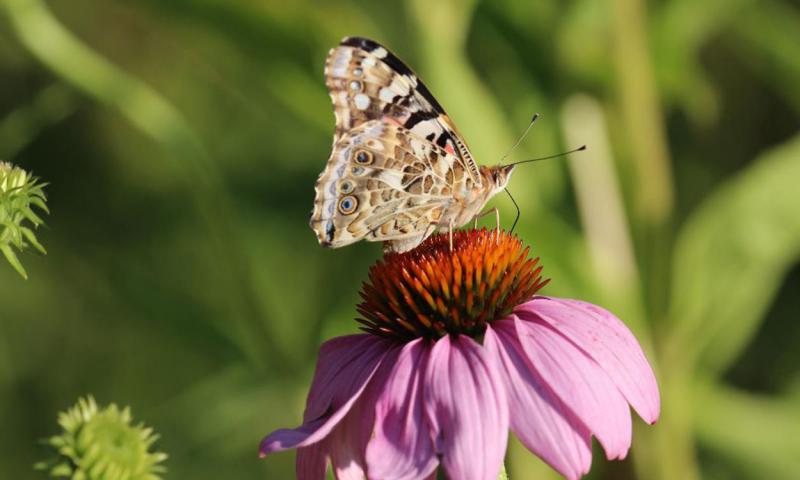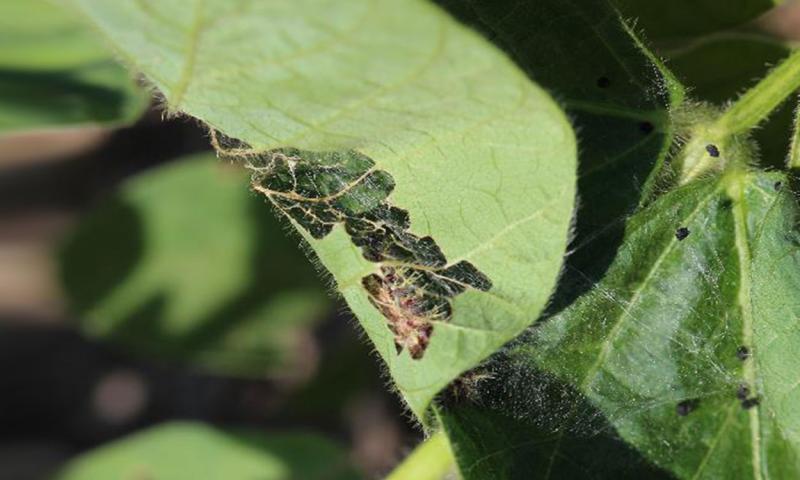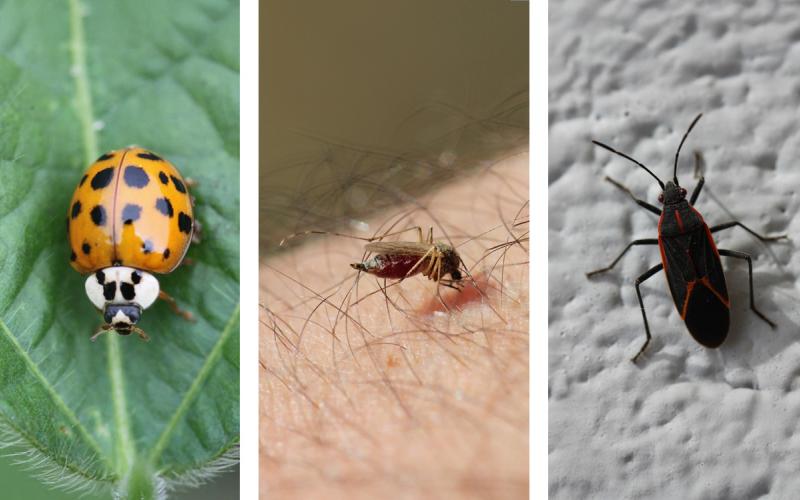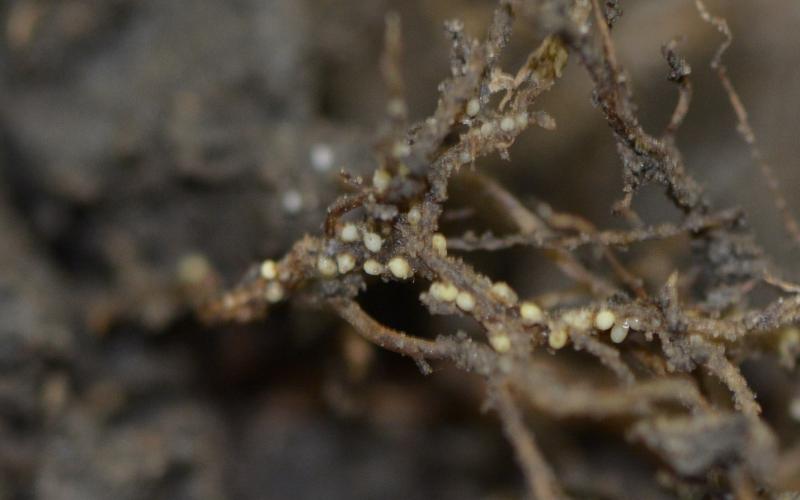
Many of our summer insect pests overwinter in the Southern U.S. and rely on wind currents to travel north in the spring and summer. The thistle caterpillar is one of those pests. Although we haven’t received reports of painted lady butterflies or thistle caterpillars yet in South Dakota, our neighbors to the north and south (North Dakota and Iowa) have. Historically, thistle caterpillars are a sporadic pest that can cause economic defoliation in soybean during outbreak years. However, we have seen large populations more frequently, which may be attributed to optimal spring conditions for the last few years.
Thistle caterpillars are the immature stage of the painted lady butterfly (Figure 1 and Figure 2). Painted lady butterflies overwinter in the Southern US and Mexico. When conditions are wet and favorable there, larger populations of the butterflies will be observed migrating up to the northern US and Canada.

Thistle caterpillars are polyphagous, which means they are capable of feeding on several different hosts. It is estimated that thistle caterpillars are capable of feeding on over 100 species of plants including major South Dakota crops like soybean and sunflower. In addition, it may also feed on some garden plants.
Its wide host range causes the thistle caterpillar to often be considered a pest. However, when it is feeding on weeds such as Canada thistle, it may be considered a beneficial insect. Although these caterpillars are generally not present in large numbers, they can cause severe defoliation and scouting should occur to ensure that this does not happen.

Thistle caterpillars feed on leaves by rolling them and using silken webbing to hold the edges together. In Figure 4, the caterpillars can easily be observed feeding on top of the plants and not in a protective leaf covering.
The caterpillars appear to have silken hideouts made on the plants but are foraging out from them. These hideouts provide shelter for the caterpillars (Figure 3).
The thistle caterpillars can vary in coloration but are typically a brown or black with a lighter colored line running the length of their bodies on each side (Figure 4).

Unfortunately, the thistle caterpillar will not remove Canada thistle from an area. This is due to the extensive horizontal root structure of Canada thistle. Although the plants may not flower and set more seeds, they will be back the following year.
In addition, reports of trying to use thistle caterpillars as biocontrol agents for thistle resulted in high infestation rates of surrounding crop fields. Therefore, the thistle caterpillar is not an ideal biocontrol agent for the management of Canada thistle.


